Cet article est dédié à Marie-Thérèse, Sanfloraine exceptionnelle et le professeur qui m’a appris à parler français et à profiter au maximum de notre expatriation en France.
There are several towns in central France that are famous mostly for “being medieval”. Many of them are immaculately restored; they give you an idea of how they must have looked in the 13th or 14th centuries. (Think of the incredible ensemble of medieval architecture in Sarlat-la-Caneda or the settings right out of The Three Musketeers in the “most beautiful village” of Pérouges.) They exist now primarily as tourist attractions where the curious traveler can have a window into life as it might have been in the distant past.
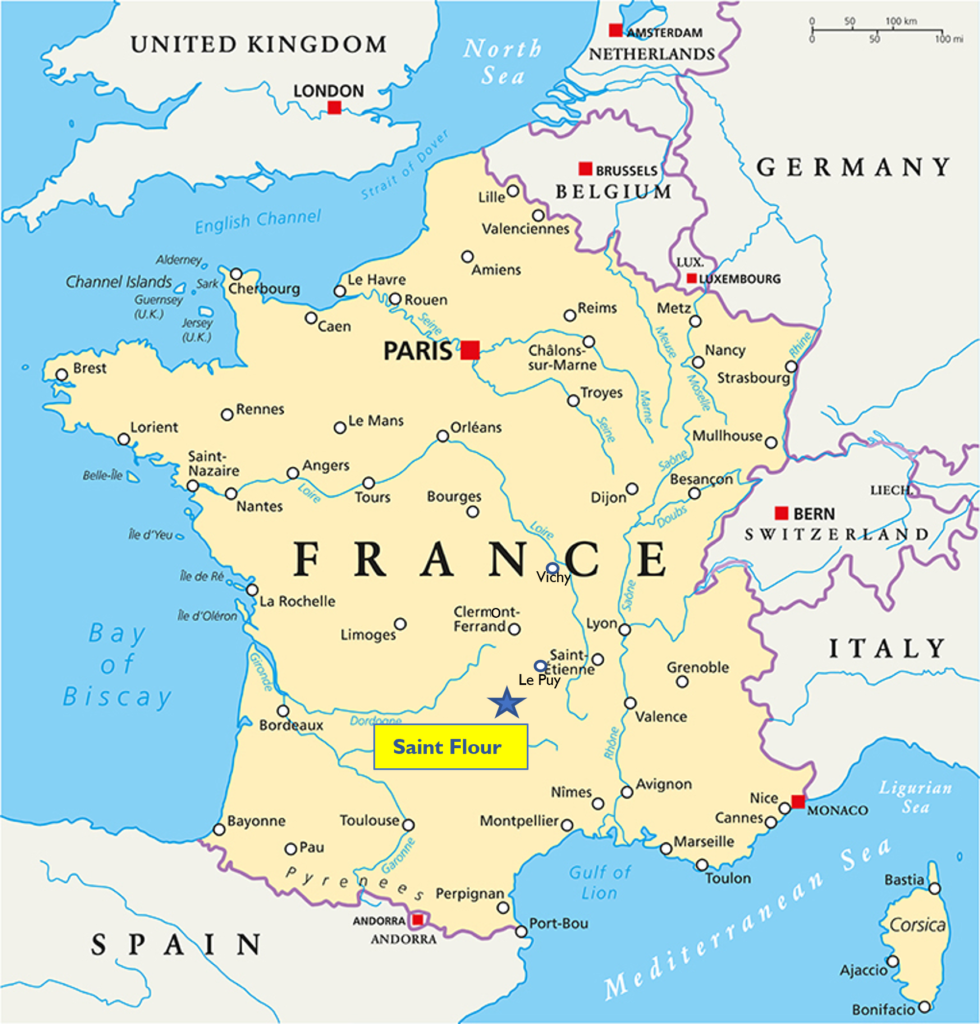
And on first impression, Saint Flour seems to fit in this category, with its beautiful medieval center surrounded by high fortress walls. But by almost any measure, it is one of the most remarkable towns in a region full of remarkable places in the deep heart of France. Although it still looks “medieval”, it is not a city frozen in the past just to attract tourists; Saint Flour has had an active presence in the country’s religious and political life that spans many centuries. It’s at the center of one of the most beautiful regions in France for outdoor activities, with massive volcanic mountains, crater lakes, ski resorts, and hiking trails. And it’s a town firmly focused on its future, a town that seems determined to remain as relevant in the 21st century as it was in the 14th.
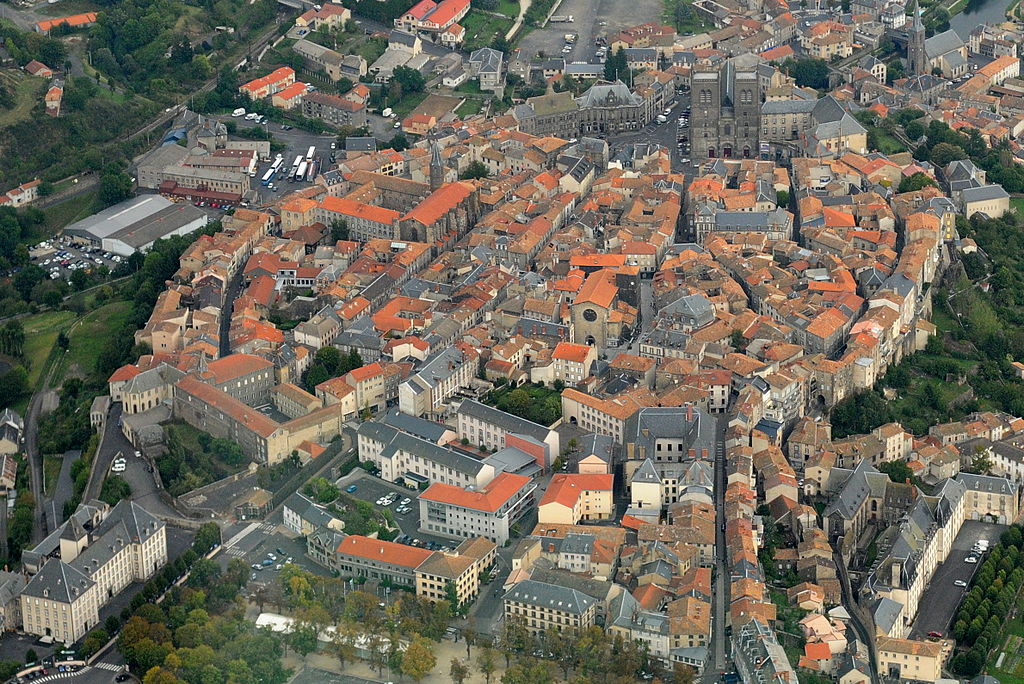
History of Saint Flour
Long before people came to this region, the Cantal was the scene of some of the most dramatic geological events ever to happen in western Europe. In fact, this whole area was one massive volcanic structure – “the largest stratovolcano on the European continent,” in the words of one local signpost. The eruptions started happening 13 million years ago, pumping lava across the landscape for several million more years. The result? A vast plain of volcanic basalt, 400 square kilometers (155 square miles) and almost 3,000 meters deep in places. It took the action of glaciers and rivers over more millions of years to carve out the rugged mountain range and deep dramatic valleys that make up this part of France’s Massif Central.
It’s only “recently” that people began to appear on the scene – perhaps 200,000 years ago when Neanderthals and their cousins first appeared in this area. For this post, though we’ll stick to what passes for recorded history, or what can be identified in the archeological record. Like many places in central France, the human history of Saint Flour has its roots in two ancient populations: the tribes of Gaul, and the Roman invaders who came through here to conquer them. (A couple of small Roman villas have been excavated near Saint Flour, and some archeologists believe there may have been a fortress of the Arvernii tribe on top of this same volcanic butte.)
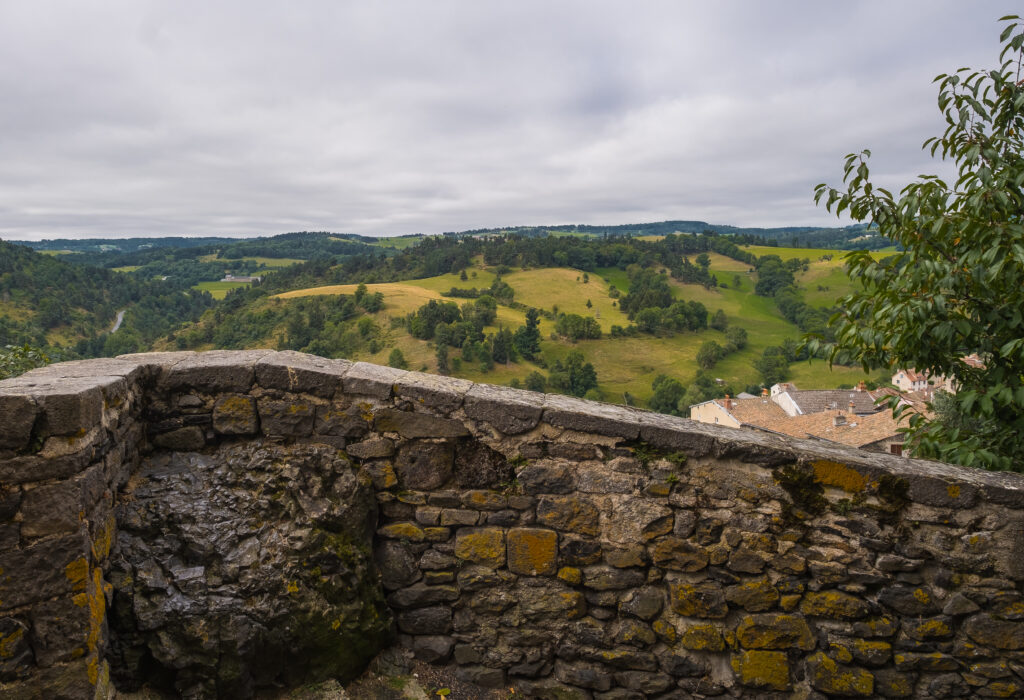
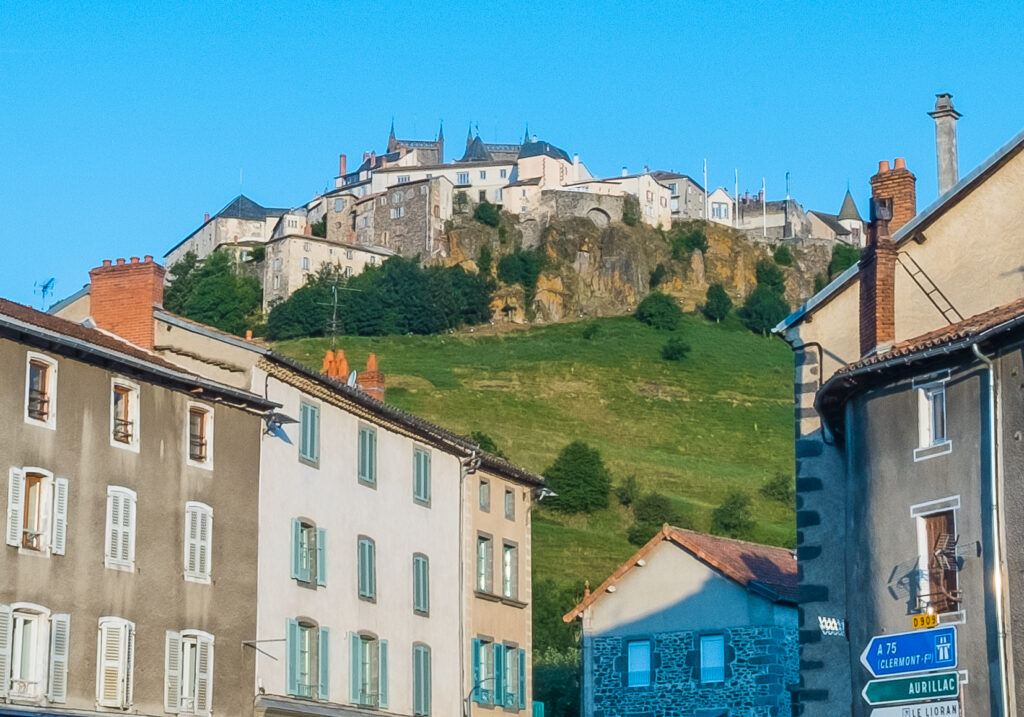
But the “modern” history of Saint Flour begins in the 300s or 400s C.E., although the story is so clouded by the mix of fact and legend that its hard to decipher. According to the legend a very early evangelist named Florus of Lodève came through this part of the Cantal to convert people to Christianity. (Wikipedia wryly says his “historicity is dubious”, and local historical markers confirm that “we really don’t know anything about him.” In any case, it was almost 600 years later before any details of his life were written down!)
Several miracles were ascribed to Florus: it’s said that he struck a rock here at the moment he and his companions were about to die of thirst and a great spring of fresh water poured out from the rock. (The spring continued to flow and to be venerated by Catholic pilgrims into the 20th century.) He is supposed to have laid hands on a different rock that blocked his path on the climb up to the site of Saint Flour, and it opened to form the Chemin de la Main you can see today. A single patch of snow descending from the sky showed him where God wanted Florus to establish his first church.
In 2017 a “multi-disciplinary committee” examined the relics of Saint Florus housed in the town’s cathedral and confirmed that they were indeed the remains of a man who lived in the 300s C.E. What we know for certain is that the current town of Saint Flour (named for him) first started to take shape around 1000 C.E., when a local aristocratic family donated land for the construction of a monastery here. That building was followed by a Romanesque church on the same site in the 11th century and the current great Cathedral of Saint Flour, built between 1398 and 1466 C.E.
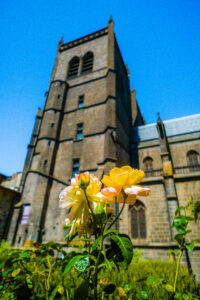
A city of influence in central France
Saint Flour had its own “golden age” in the 1300s, when the population (between 7,000 and 8,000) was larger than it is today. It sat at the crossroads of several ancient trade routes, making it a prosperous economic hub for the area. The Kings of France gave the town the right to collect royal taxes as well as a role in administering the region. Saint Flour’s markets and annual trade fairs put it at the center of economic activity in the Cantal. And In 1317 the city became the seat for a newly appointed Bishop, essentially making it one of the religious capitals of the Haute Auvergne.
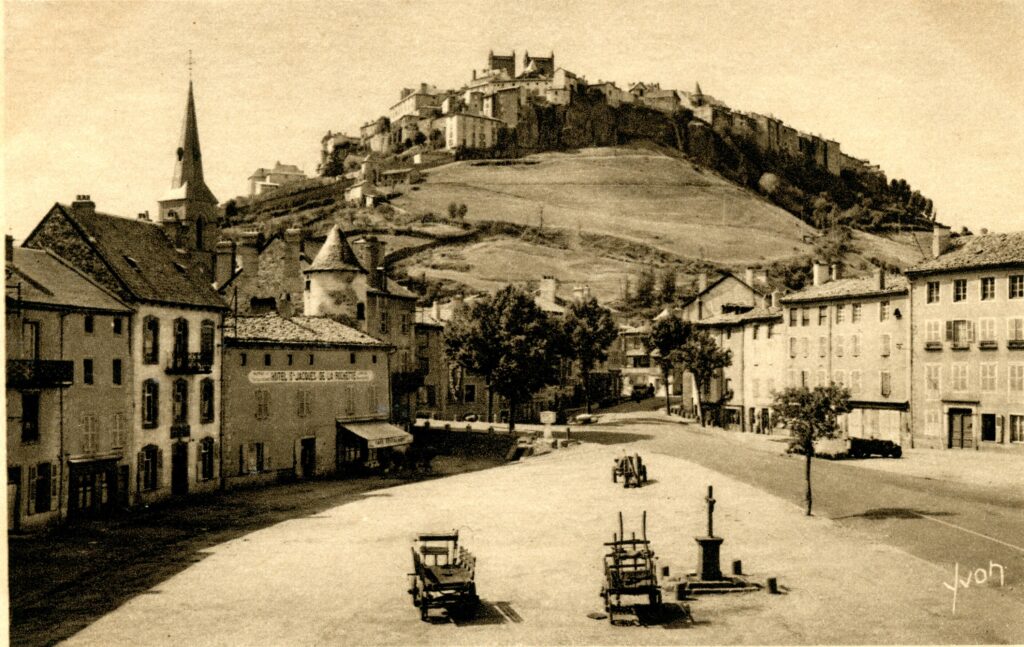
It couldn’t last. First came the Black Plague, wiping out whole families and reducing Saint Flour’s population to around 4,500 by 1362 C.E. Then the English came to the Cantal as the Hundred Years War inevitably gravitated to this area right on the border between the armies of the French and English kings. At first the war came in the form of marauding bands of mercenaries, “pillaging and murdering at leisure”, as one source puts it. Things got more serious when the larger armies began occupying the region, especially between 1383 and 1390.
Saint Flour was the object of numerous direct assaults, prolonged sieges, and other attempts to infiltrate the city’s walls; the walls were strong, though, and the town had its own source of fresh water inside the fortress, so it never fell to the attacking forces. A rare example of a French town that had both religious influence (through its Bishop) and royal privileges, the town remained important in the centuries that followed the Hundred Years War.
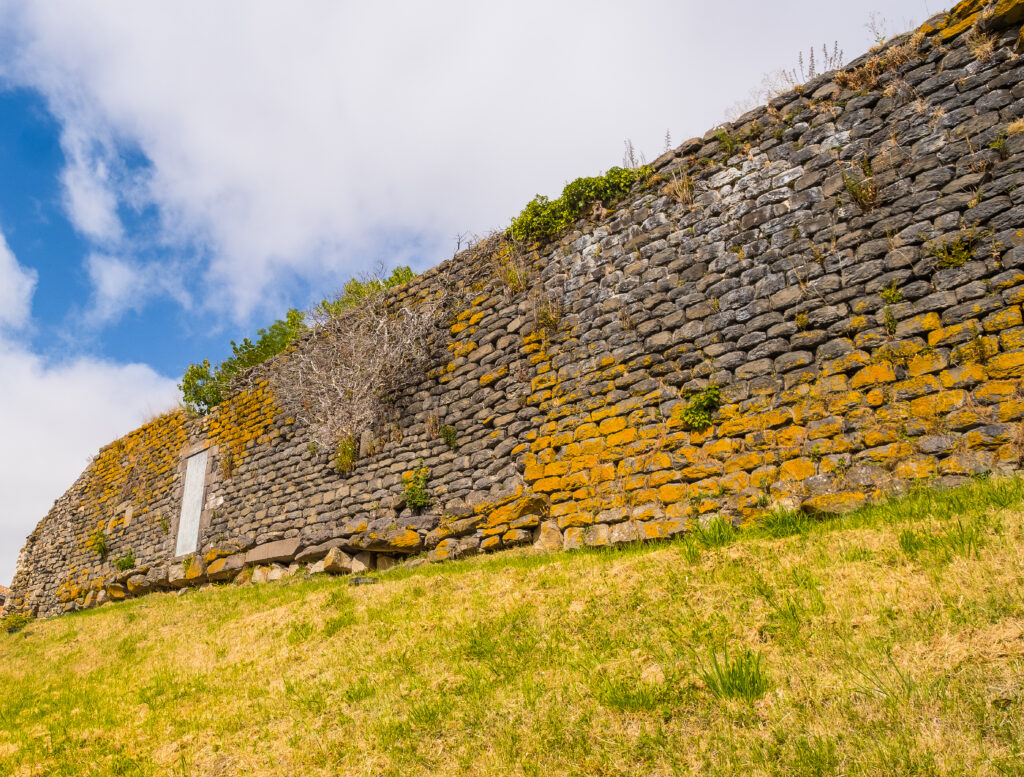
In fact, the next most prominent historical events came with the French Revolution (1789-1799). Like many other towns with “saintly” names, Saint Flour had to change its name, calling itself variously Fort-Cantal, Fort-Libre or Mont-Flour. The great cathedral was sacked and turned into a “temple for the Supreme Being”; the 14th-century Notre Dame church was deconsecrated and used as a grain market. (It’s been restored now and used as a space for temporary art exhibitions; the town reclaimed its old name, Saint Flour, in 1793.)
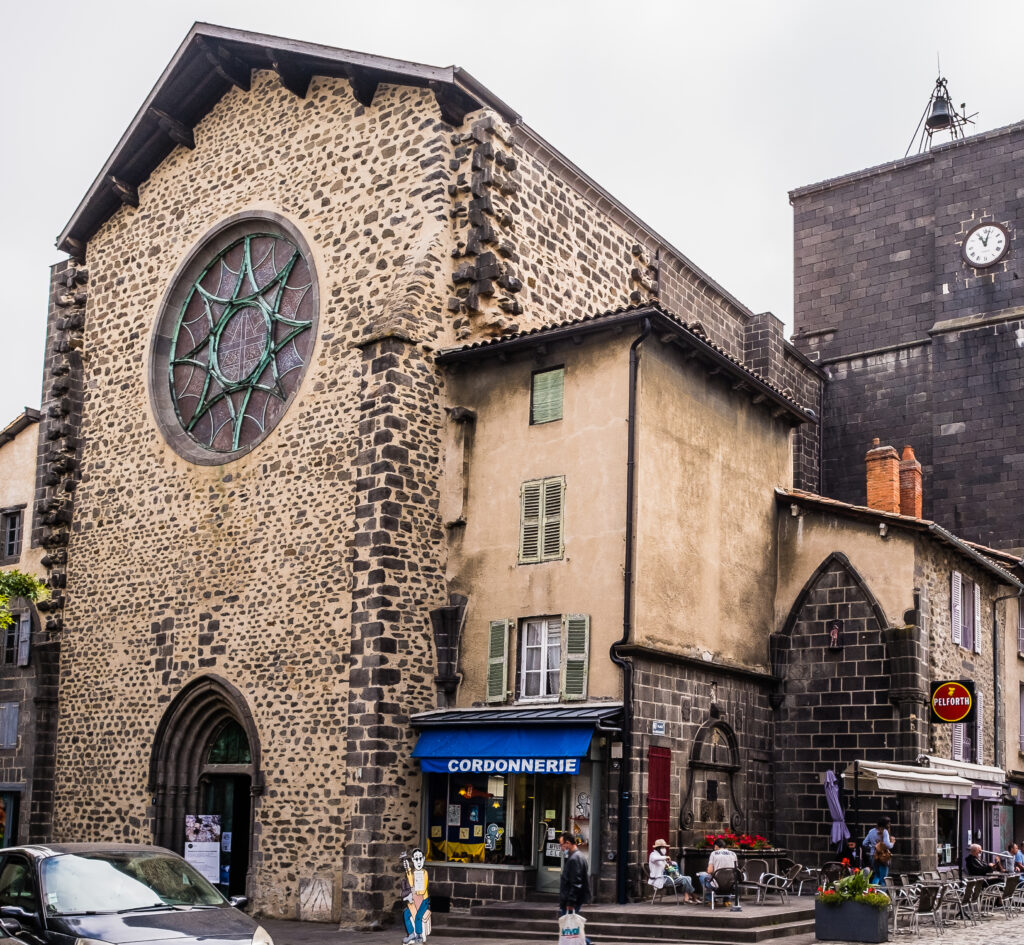
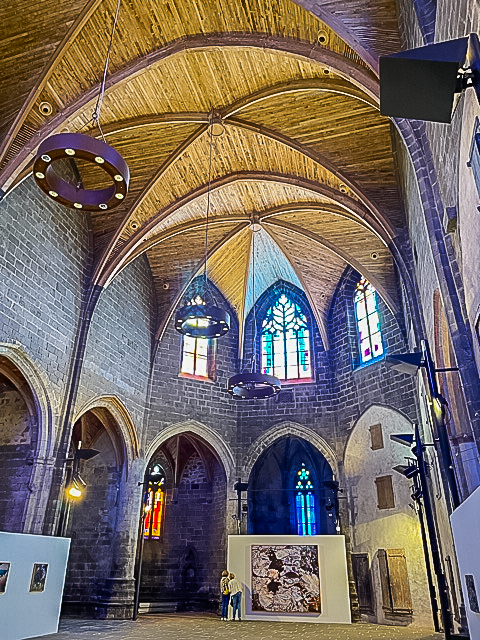
Visiting Saint Flour today
As you walk into the town’s main square, the two strains of Saint Flour’s long history are immediately obvious. On the right: the great Cathedral – one of the four cathedrals you’ll find in the Auvergne region (along with the famous “black” cathedral in Clermont-Ferrand, the exotic and richly-historic one in Le Puy en Velay, and the classic church in the center of Moulins). On your left: two fine Renaissance buildings that represent the secular power of Saint Flour and its influence on the economic life of the region.
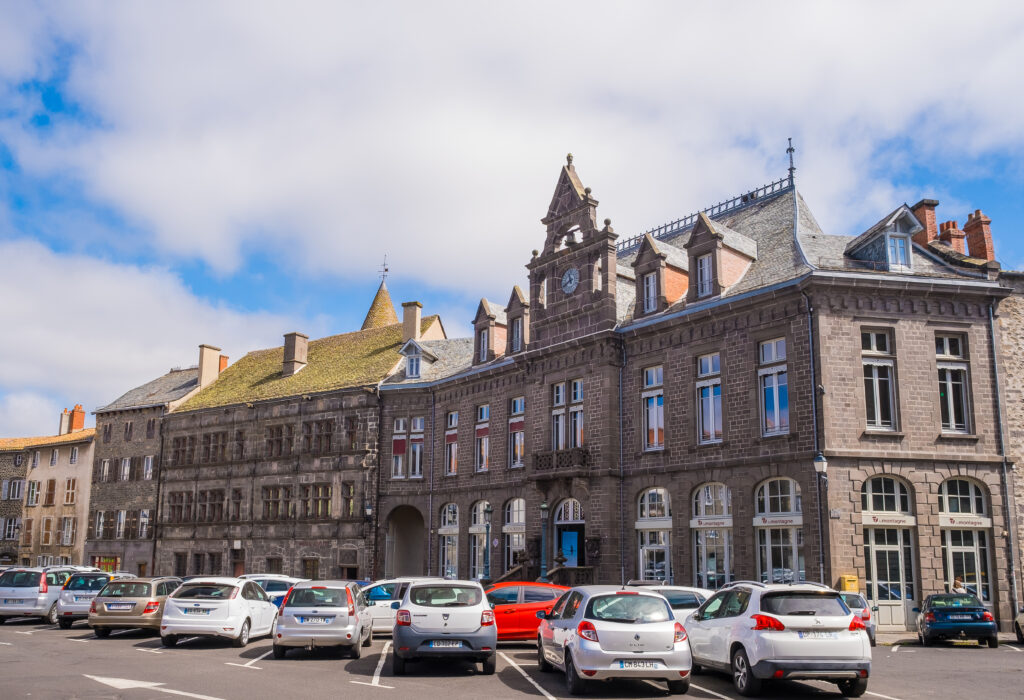
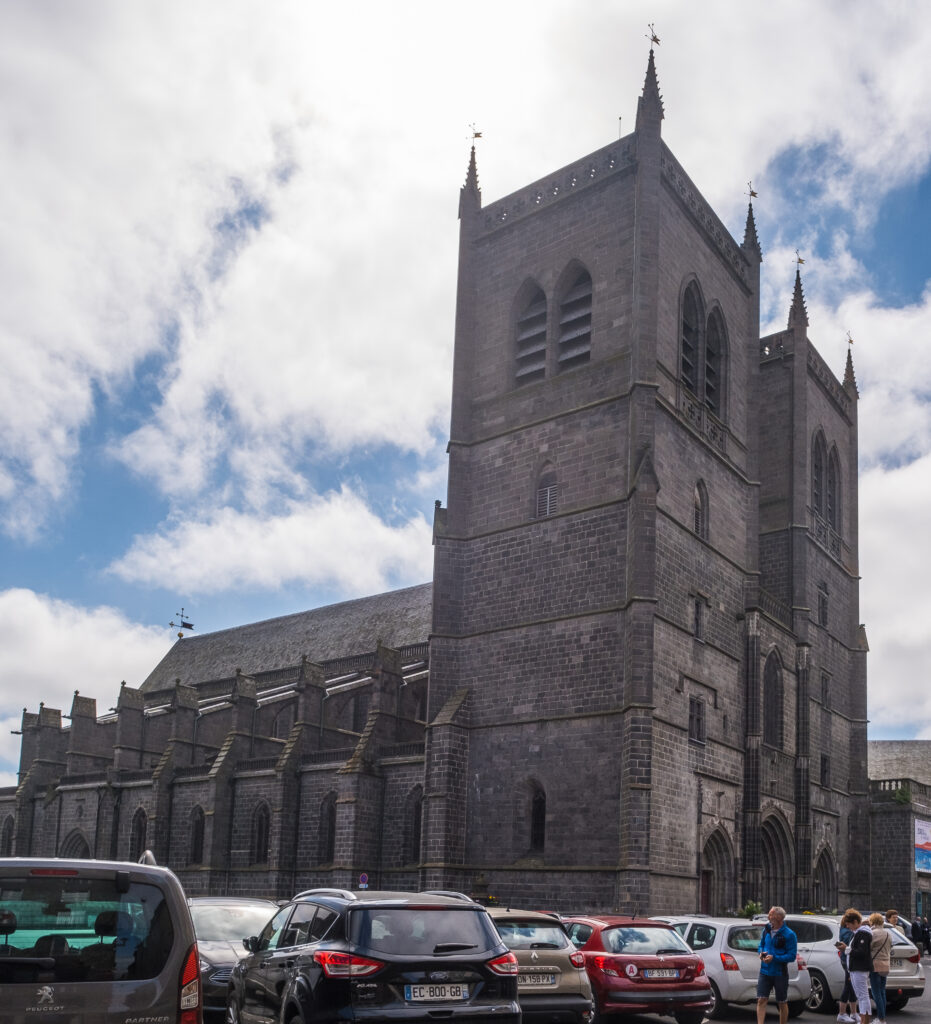
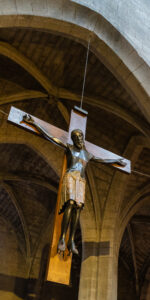
The Cathedral of Saint Flour (begun in 1398 C.E.) is built of the same dark basalt that characterizes so many structures in this part of France. Inside, you’ll find a famous crucifix known as “the Black Christ”, sculpted sometime between 1069 and 1290; while there are several well-know “Black Madonna” statues in churches around central France, it’s unusual to find Jesus depicted in this way.
Attached to the cathedral is the old Bishop’s Palace, now converted into “the Museum of the Haute Auvergne”. It’s worth a visit, too, to see exhibits on the rich archeological history of the region, some priceless artwork from the Cathedral’s treasury, and a good collection of everyday furniture, clothing, musical instruments, and folk art from the deep heart of France.
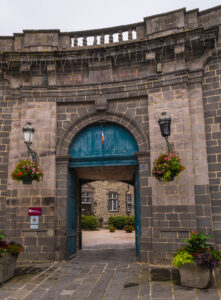
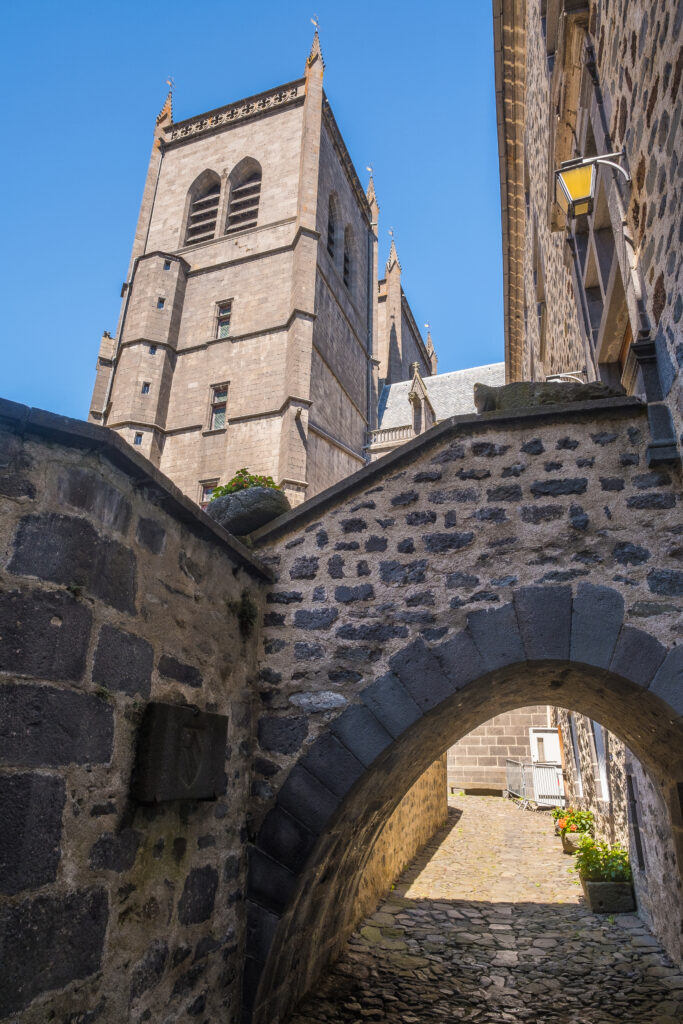
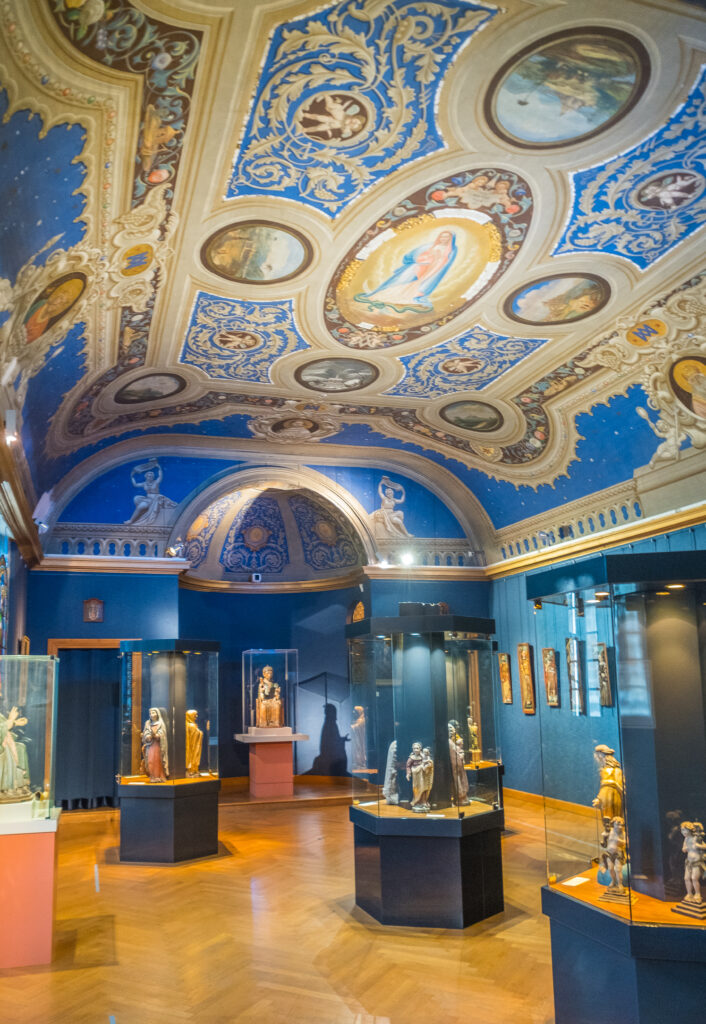
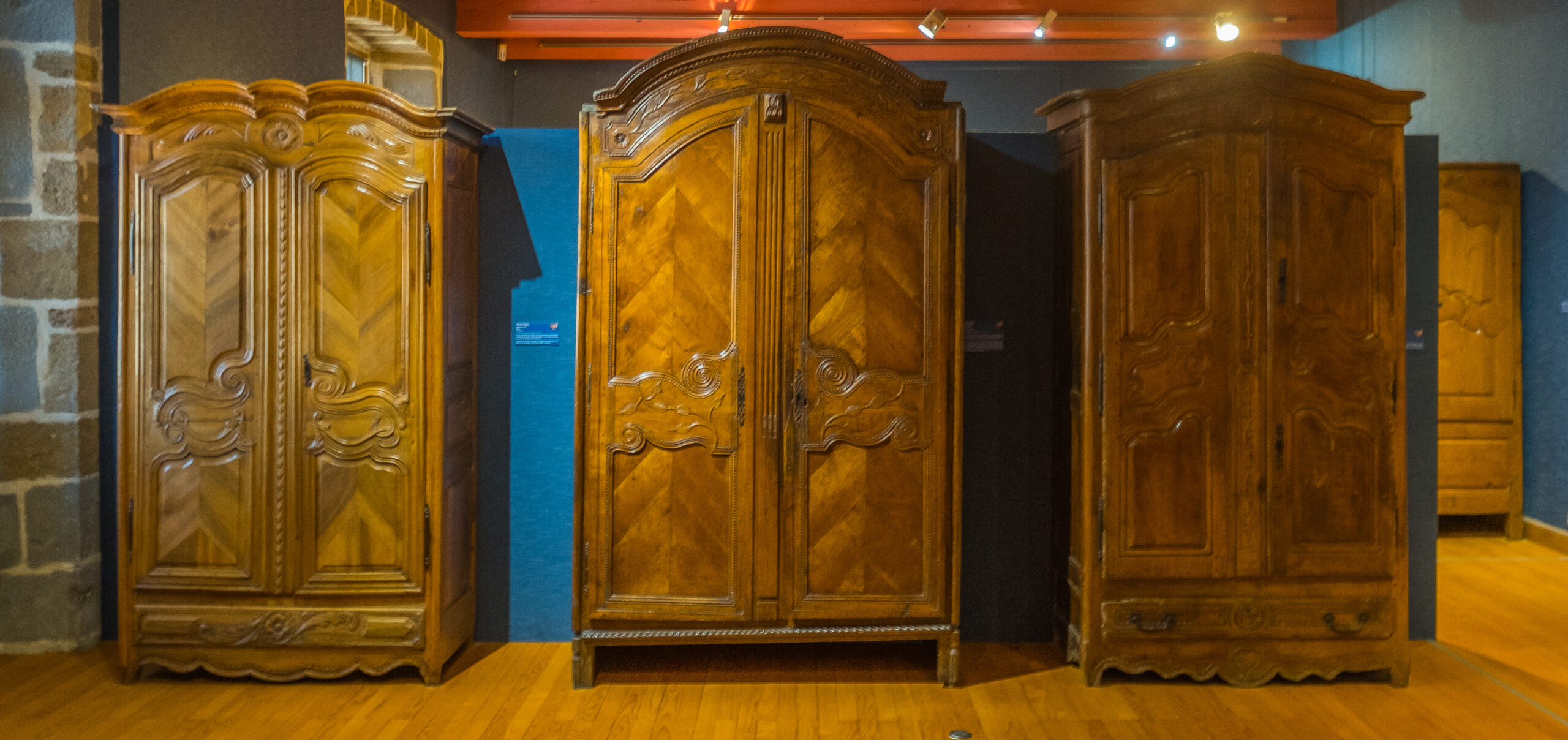
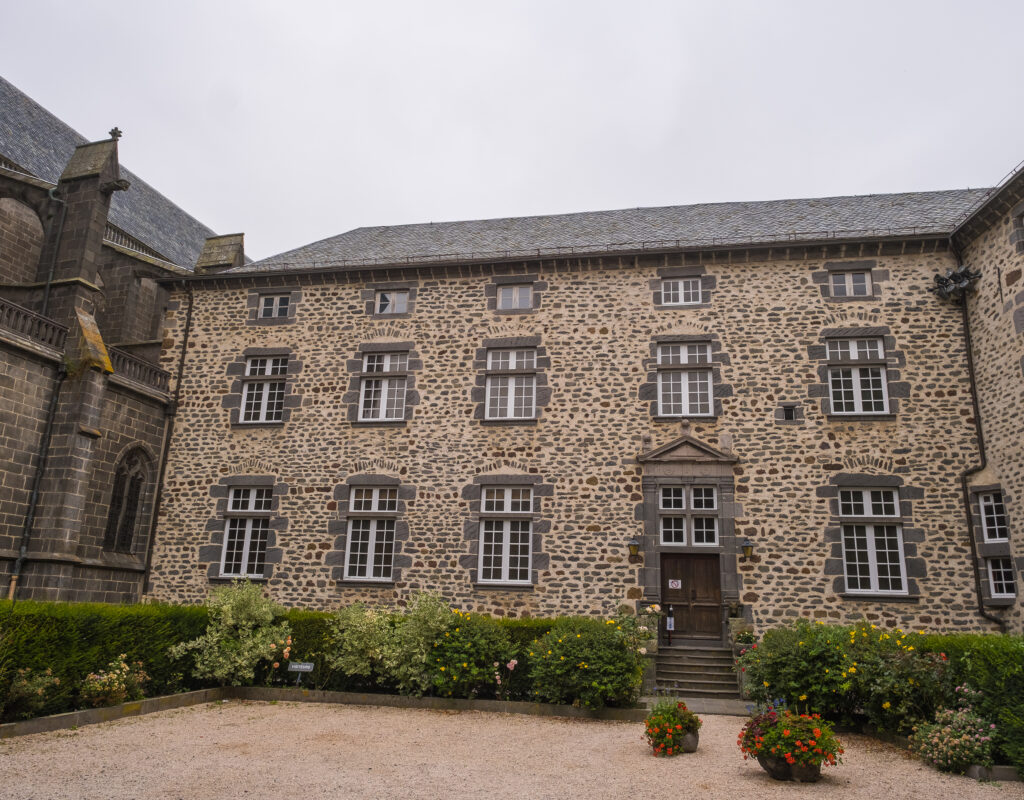
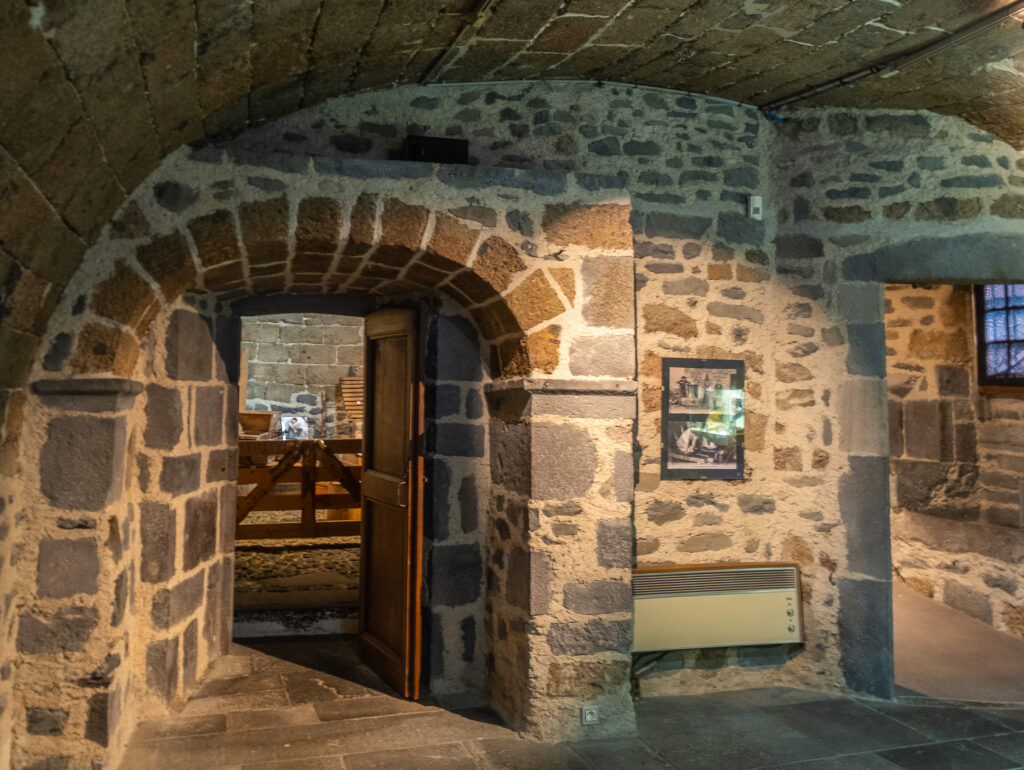
Scenes from the Museum of the Haute Auvergne
Back outside the Cathedral complex, you’re only a few steps away from a second museum that is well worth a visit: the Musée Alfred Douët. It’s in a fine Renaissance building (also in black basalt) that housed the 3 civic “consuls” who governed the city and its surrounding precincts beginning in the 1400s C.E. The museum itself is named for the man who purchased the building in the early 1900s and amassed an important collection of art and antiques, making the place worthy of designation as a "top museum in France".
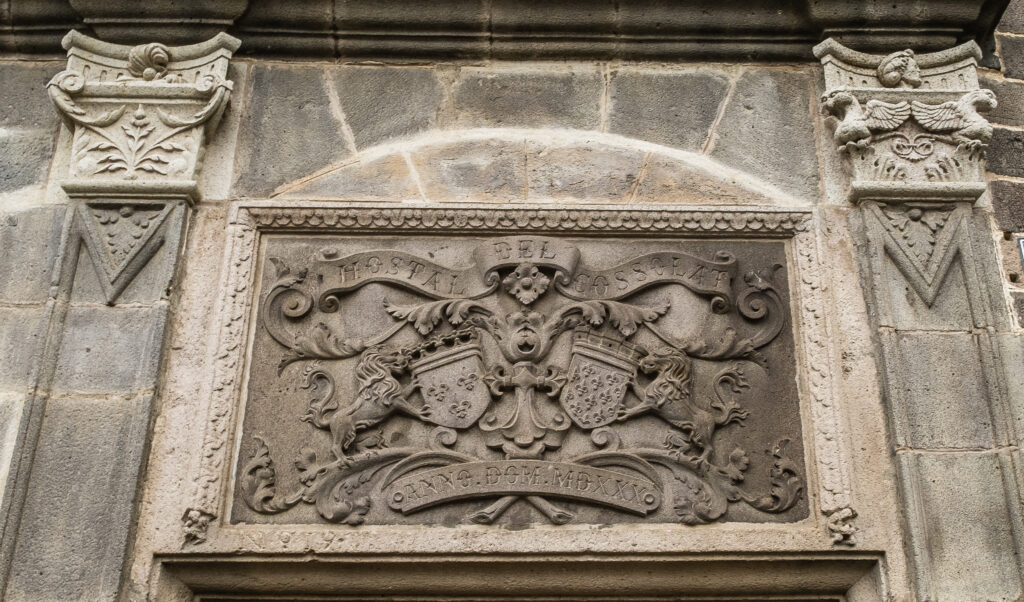
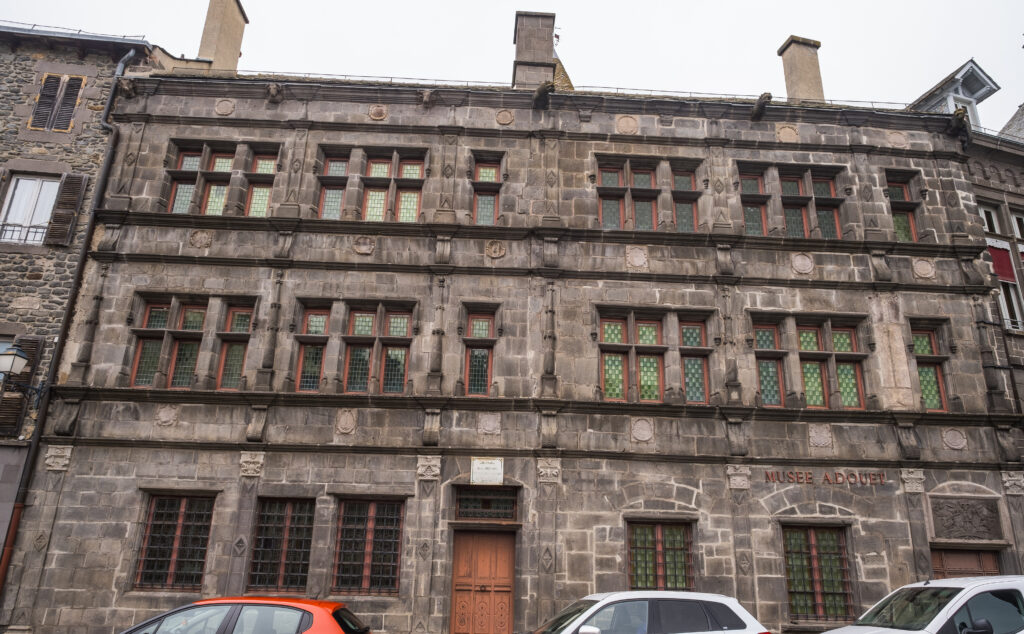
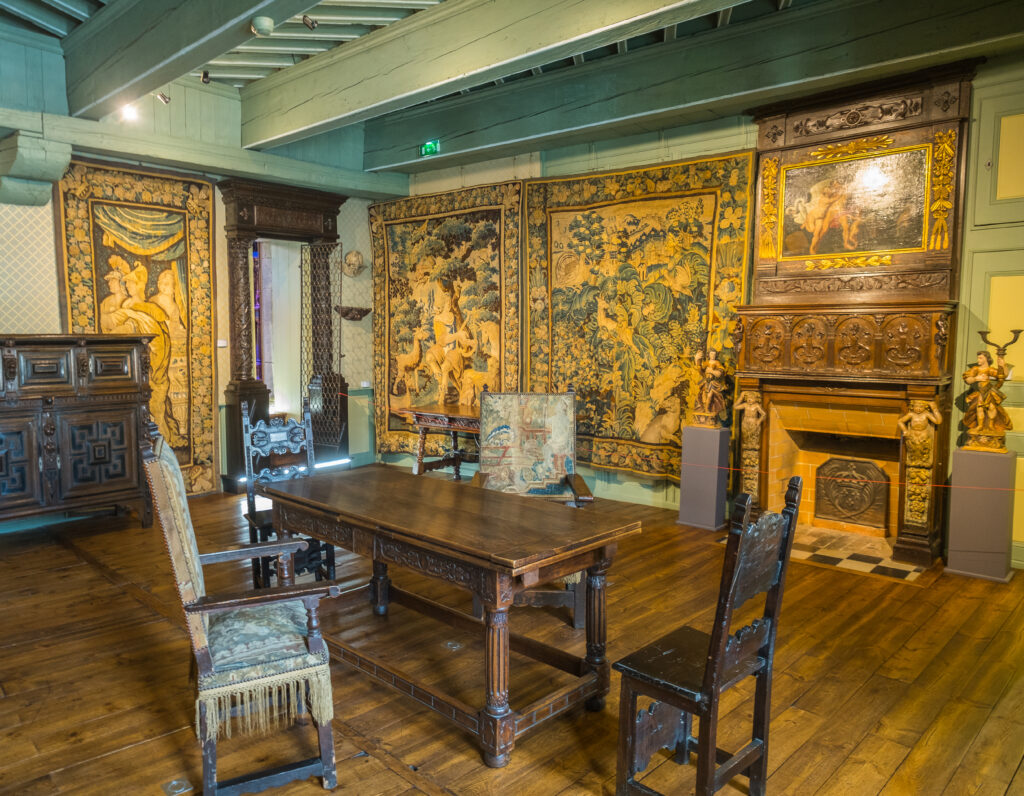
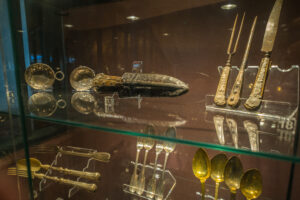
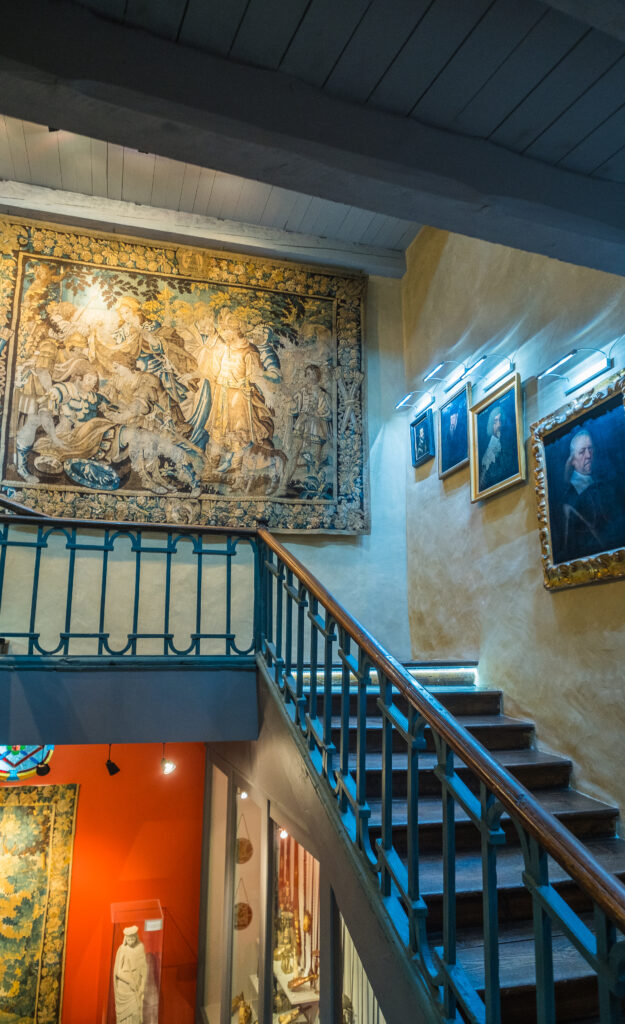
A little further down the hill from centre ville, you can see further evidence of Saint Flour’s influence over the centuries in the buildings called “the Grand Seminary”. Founded in 1651, it served as a primary training center for members of the “high clergy” for almost 300 years (interrupted only by the Revolution) and amassed one of the great libraries in central France; today, it houses a mid-level hotel and restaurant.
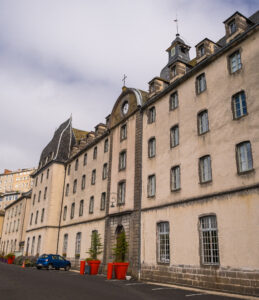
Two other things struck me as worth mentioning from my most recent visit to Saint Flour. It’s true that much of the town’s center is medieval (and well-preserved, at that!) – but there are also some significantly more modern quartiers to encounter as you walk around the city. For me, these are clear evidence of Saint Flour’s commitment to facing forward rather than back onto its long history; they give the city a fresh, contemporary feel in places.
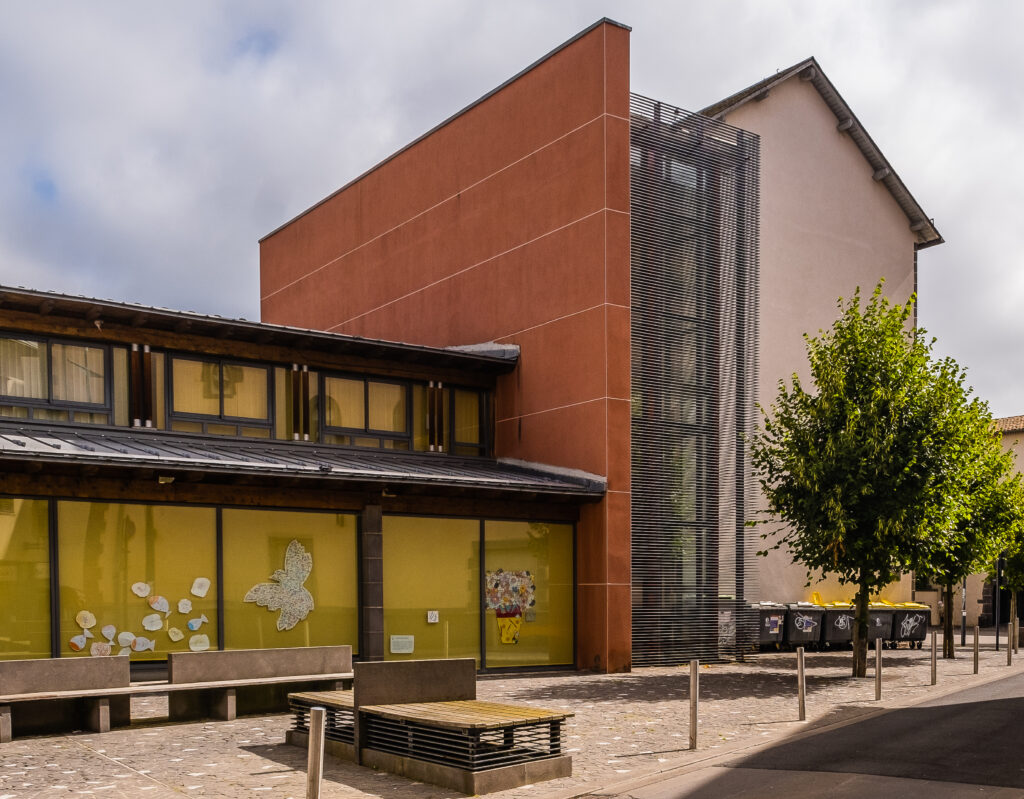
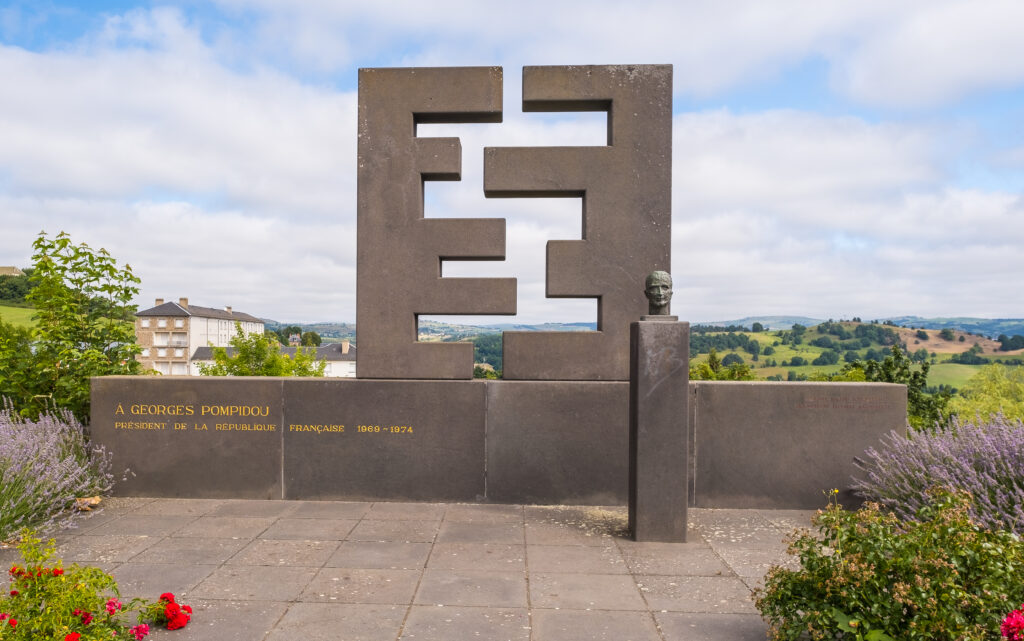
And as you are on your way out of town, you may want to stop at the very contemporary monument to Georges Pompidou, president of France from 1969 until his death in 1974. He was born in a little town here in the Cantal and served as a Deputy representing the Saint Flour area before going on to bigger things on the national stage.
Things to see and do near Saint Flour
On my most recent trip to Saint Flour I stayed in a hotel in the “lower city” that has grown up over the centuries around the basaltic butte. For me, it was a perfect base for exploring the Cantal, one of the wildest, least populated, and most beautiful parts of France. (And despite its sparse population, the département happens to contain several extraordinarily historic sites.) Here are just a few examples of some easy day trips from Saint Flour to give you an idea of the variety of experiences you might try:
See the massive Chateau de Murol – my pick for the most interesting castle visit in all of central France – and make the 2-hour drive back through the gorgeous peaks around Le Mont Dore.
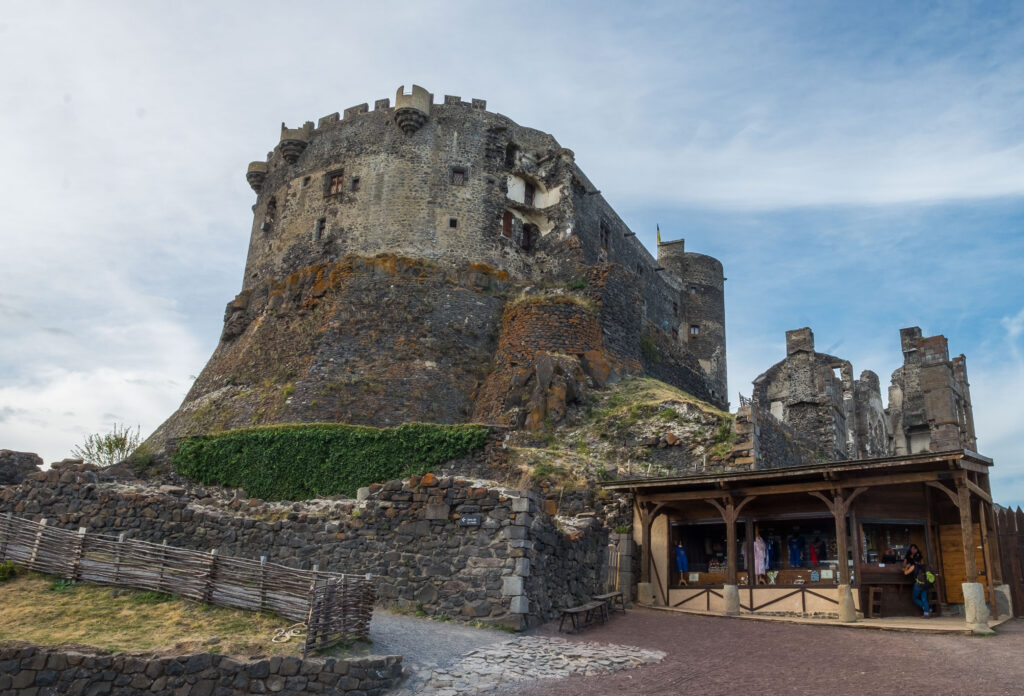
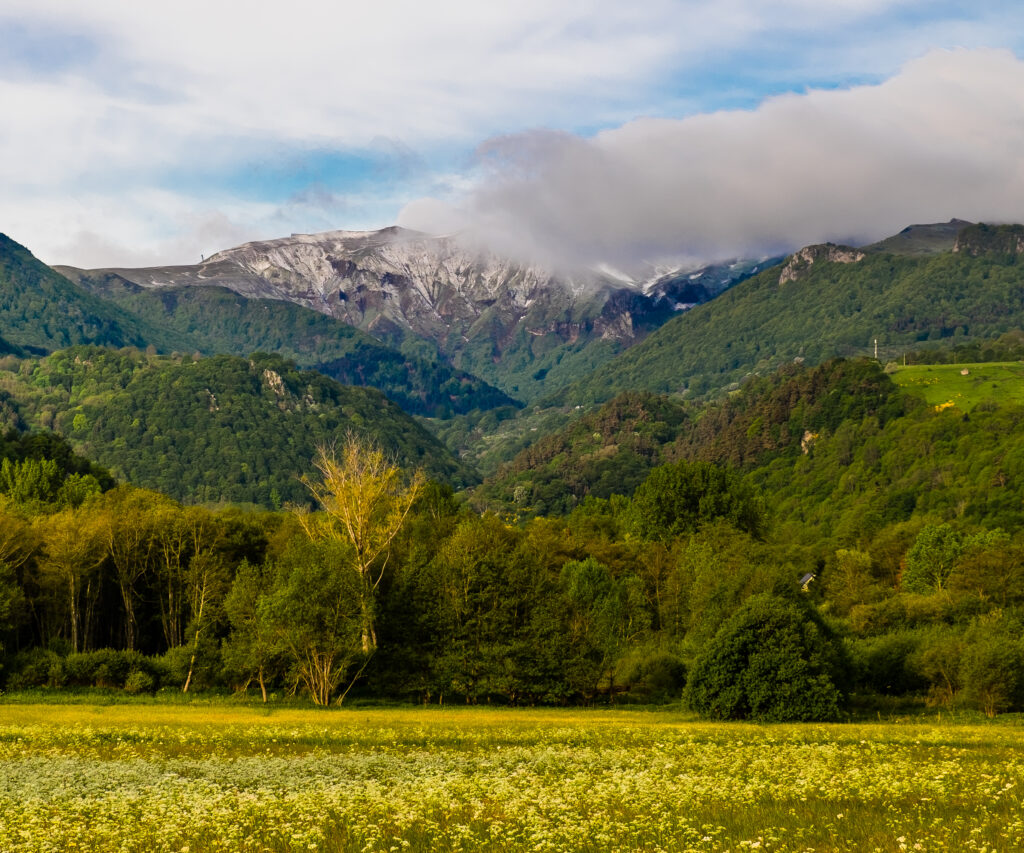
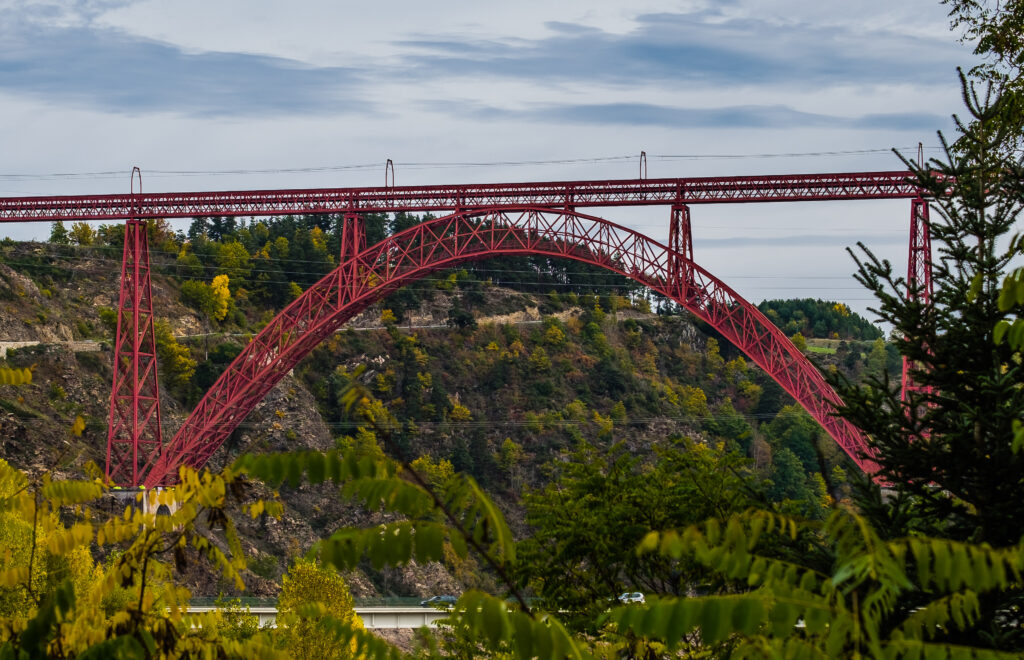
Check out one of Gustav Eiffel’s early masterworks (before he built “that tower”) at the Viaduc de Garabit. It’s only about 30 minutes from Saint Flour, and while you’re en route you can stop to see the ruined castle of Alleuze.
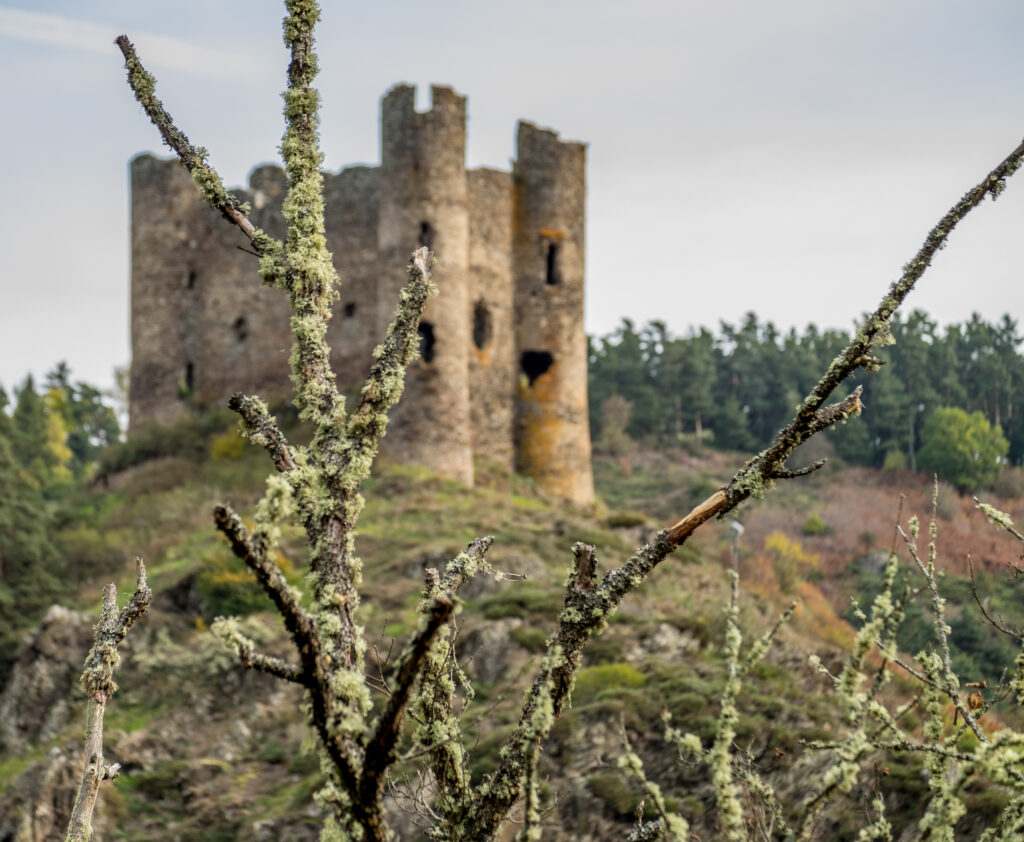
For a day at the beach, or on a boat, or hiking through the mountains, you’re only an hour-and-a-half from the crater lakes at Lac Pavin and Lac Chambon – and the drive through the Cantal will make you a believer in the natural beauty of this region!
For more hiking, cycling, climbing, and spectacular scenery, drive an hour from Saint Flour to the great Puy Mary, one of the “Grand National Sites” of France. It is so spectacular, in fact, that you’ll need to go early to find any place to park anywhere close to the peak; it was popular before the Tour de France made this one of the most difficult mountain stages in the 2020 race, and it seems even more so now.
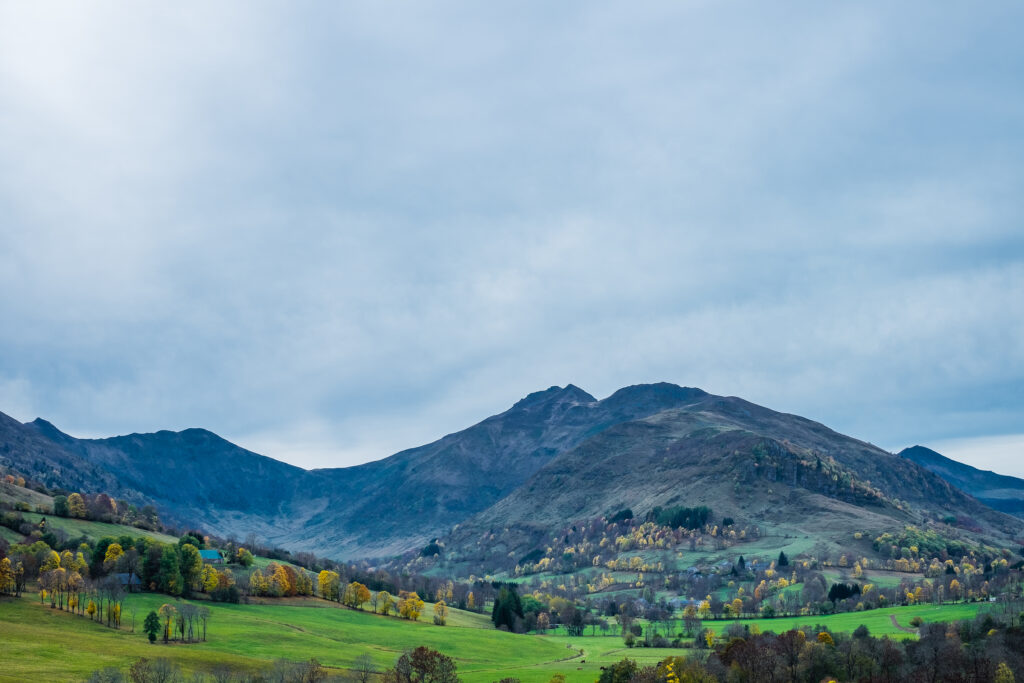
(When I was there this summer it seemed like half the cyclists in France were testing their abilities to climb the Puy in imitation of the professionals who passed through here last year!) The summit rises to 1,787 meters (5,862 feet), so bring a walking stick and a camera to make the most of the experience.

Whether you come in summer or winter, a trip to the ski station at Le Lioran (36 minutes away from Saint Flour) will reward you with a panoramic overview of almost the whole Massif Central of France, from the UNESCO sites around the Puy de Dome across all the great mountains of the Cantal.
Whatever your interests – from the currents of medieval history to a day at the lake or on the ski slopes – Saint Flour is an appropriate base for exploring the Cantal. While you’re there, certainly take the time to explore the ancient heart of the city and walk around the old rampart walls to take in the countryside.
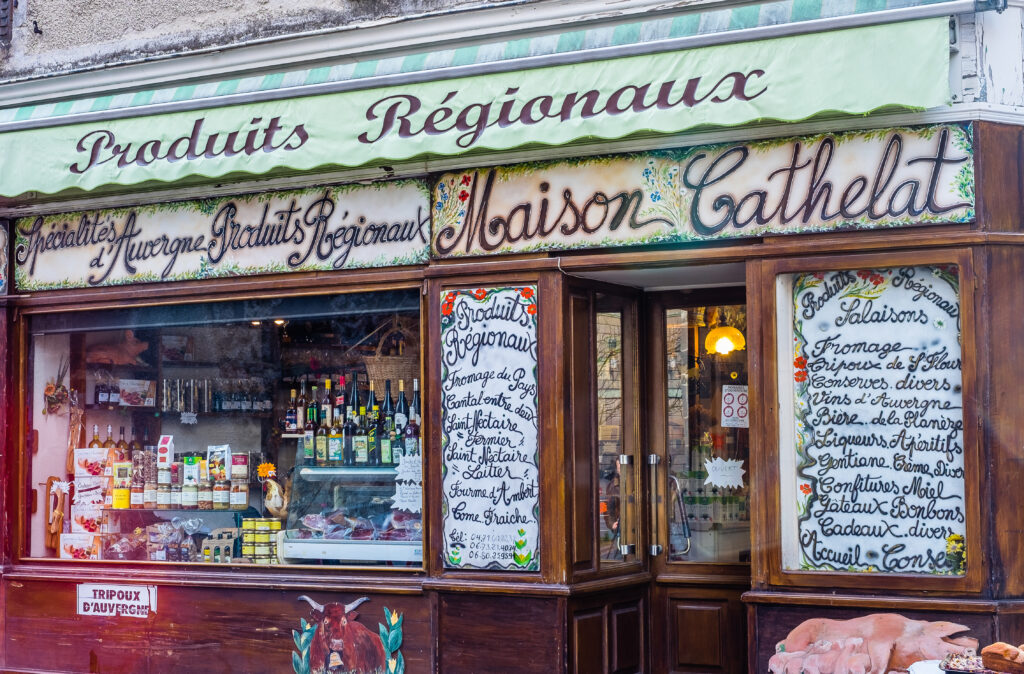
Take note of all the ways this town has influenced the region surrounding it over centuries and centuries. But keep an eye out, too, for everything about this remarkable place that keep it looking firmly forward into the 21st century!
Do you have a favorite place in central France? What appeals to you most about it – the history? The scenery? The food? Please take a moment to share your experience in the “comments” section below. And while you’re here, I’d be grateful if you’d take a second to share this post with someone else who’s interested in the people, the history, the places, and the culture of “the deep heart of France”!
Unless otherwise noted, all photos in this post are copyright © 2021 by Richard Alexander
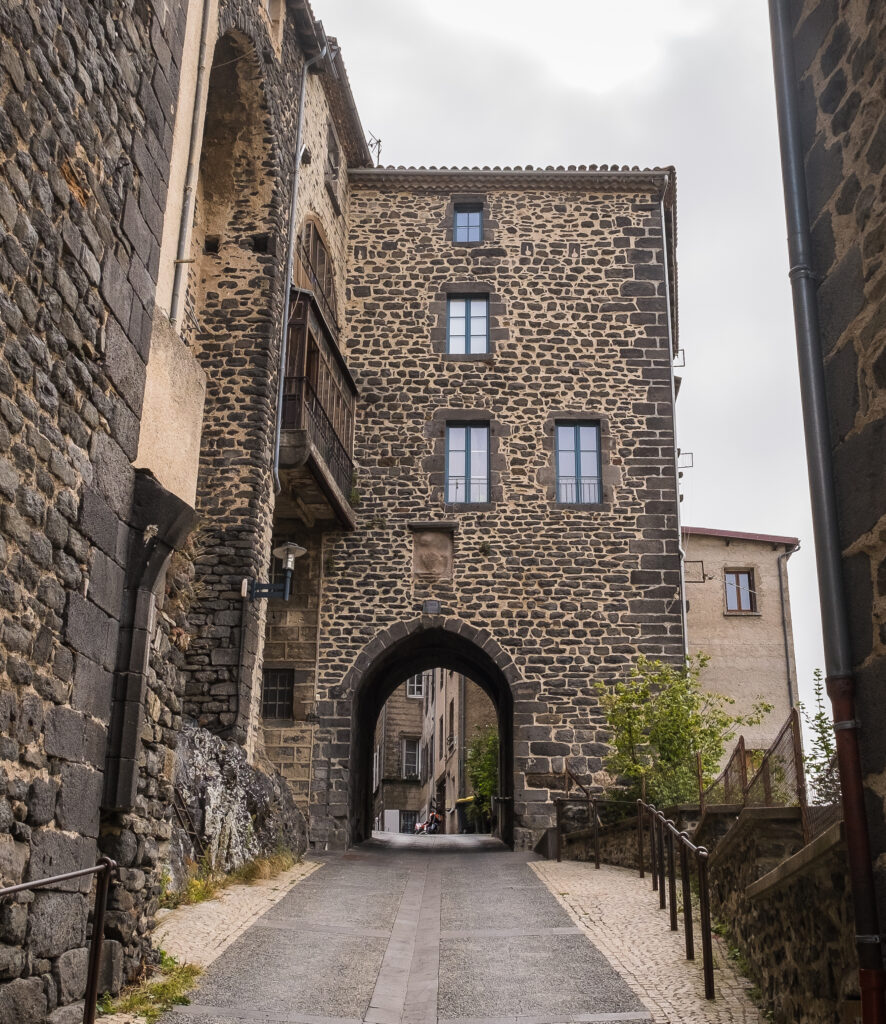
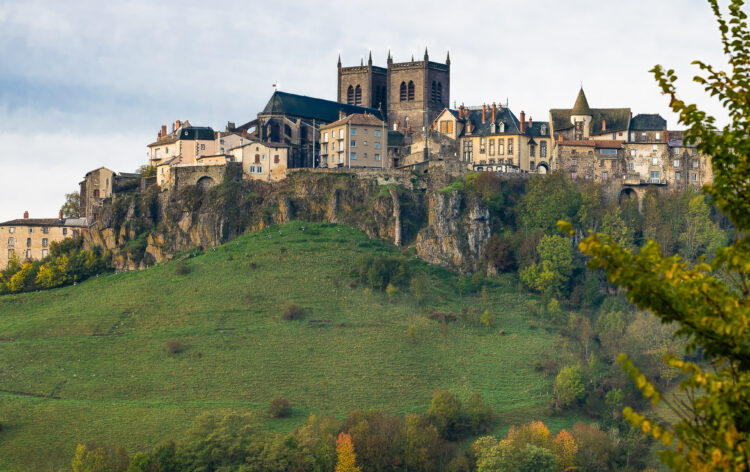

Another very well researched and informative article. Thanks.
Incredible place, Saint Flour!!
A great place for nature and history lovers.
Great article Richard! I read it as we drove south on A75 passing Eiffel’s bridge. Please let me know if you’re back this way next year.
Great to hear from you, Kenneth – thank you! I hope to be back in mid-’22 and will let you know if that happens.